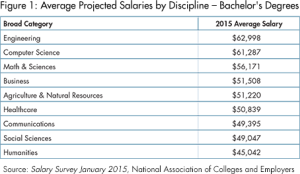How can we help young adults who experience (sometimes debilitating) mental health challenges?
The presence of anxiety and depression among America’s youth is strong. I was blown away by a recent Slate article on this topic, written by Julie Lythcott-Haims, author of How to Raise and Adult. In her article, “Kids of Helicopter Parents are Sputtering Out,” Lythcott-Haims shared some troubling statistics describing the prevalence of the mental health crisis on college campuses. In her article, she cites evidence linking “intrusive parenting” with struggling students.
For example:
- A 2012 study of 438 college students reported in the Journal of Adolescence found “initial evidence for this form of intrusive parenting being linked to problematic development in emerging adulthood … by limiting opportunities for emerging adults to practice and develop important skills needed for becoming self-reliant adults.”
- A 2013 study of 297 college students reported in the Journal of Child and Family Studies found that college students with helicopter parents reported significantly higher levels of depression and less satisfaction in life and attributed this diminishment in well-being to a violation of the students’ “basic psychological needs for autonomy and competence.”
- And a 2014 study from researchers at the University of Colorado–Boulder is the first to correlate a highly structured childhood with less executive function capabilities. Executive function is our ability to determine which goal-directed actions to carry out and when and is a skill set lacking in many kids with attention deficit disorder or attention deficit hyperactivity disorder.
Many of my young adult and college student clients have struggled with, or are currently working through, the thwarting impact of mental illness in their lives. In a recent presentation I made for parents of incoming college students I invited them to consider how their relationship with their student is changing as the student prepares to start college.
My first bit of advice – “Push them to problem-solve challenges on their own.”
I go on to invite them to watch out for Madeline Levine’s signs of overparenting, which Lythcott-Haims cites in her article when she writes:
“Madeline Levine, psychologist and author of The Price of Privilege, says that there are three ways we might be overparenting and unwittingly causing psychological harm:
- When we do for our kids what they can alreadydo for themselves;
- When we do for our kids what they can almostdo for themselves; and
- When our parenting behavior is motivated by our own egos.”
(Takes deep breath).
Again, I calmly say… “Push them to problem-solve challenges on their own.”
From my perspective as someone who works with job seekers daily, I can tell you that a client’s resilience and their capacity for independent problem-solving are probably the traits that I most hope to help them build through our coaching relationship.
Why? So many reasons!
Employers want to hire folks who are resilient in times of struggle, and who have the independent problem-solving skills to manage through obstacles in their workplace. These skills also serve our students well in their actual job searches (which can be up and down while waiting for the right opportunity to come to fruition).
Finally, I suspect problem-solving will be one of the skills that will best serve this generation going forward. I tell my clients that today they are actually preparing themselves for jobs that do not yet exist. With the speed with which change is occurring and the forces of technology and globalization, for example, the future for young adults is uncertain. However, the good news is that with problem-solving and career development skills on their side, they will be ready for these challenges and prepared to convert that unknown landscape into a very positive and hopeful future.
Reflection:
What are your best strategies or techniques for helping young adults and college students to begin cultivating their own independent problem-solving skills?
(One of favorites you can use when they come to you with an issue? Begin by first asking, “Wow, that sounds tough. What are your ideas for how to get through this?” … and see what brilliant ideas they come up with first… )

